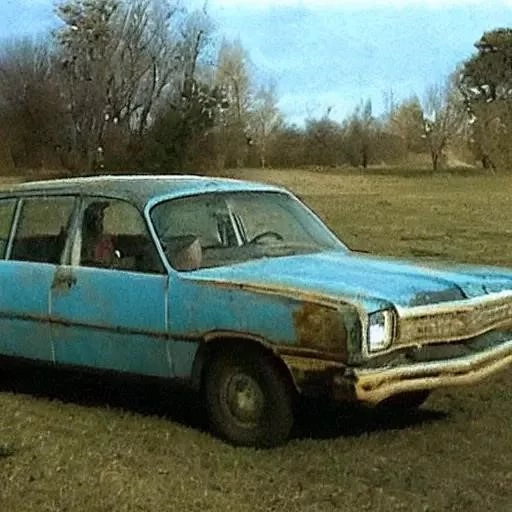
For generations‚ the odometer has been the undisputed oracle of a car’s life‚ its numbers dictating perceived value and longevity. A vehicle cresting the 100‚000-mile mark was once universally viewed with suspicion‚ often signaling an impending cascade of mechanical woes and a rapid decline in reliability. This ingrained perception has shaped countless purchasing decisions‚ steering buyers away from what seemed like inevitable maintenance nightmares and towards lower-mileage‚ ostensibly safer bets. However‚ in an era of unprecedented automotive advancement‚ this traditional wisdom is rapidly becoming an outdated relic‚ failing to capture the nuanced reality of modern vehicle durability.
Today‚ the landscape of automotive engineering has dramatically shifted‚ rendering the old adage of “high mileage equals high risk” largely obsolete. Manufacturers‚ armed with sophisticated design tools‚ superior materials‚ and precision manufacturing techniques‚ are producing vehicles built to withstand far greater distances than their predecessors ever could. Engines are more robust‚ transmissions more refined‚ and every component‚ from the smallest sensor to the largest structural member‚ is engineered for extended operational life. Consequently‚ judging a car’s remaining potential solely by its odometer reading is akin to assessing a library by the number of books on its shelves without considering their content or condition; it’s an incomplete and often misleading metric.
Understanding a car’s true condition requires looking beyond the digits on its dashboard. Here’s a breakdown of critical factors influencing a vehicle’s longevity‚ offering a more comprehensive perspective for buyers and owners alike:
| Factor | Description | Impact on Longevity |
|---|---|---|
| Maintenance History | Regularly scheduled servicing‚ fluid changes‚ and timely repairs. | Crucial. A well-maintained car with high miles often outperforms a neglected low-mileage one. |
| Driving Conditions | Predominantly highway miles (less wear and tear) vs. city driving (stop-and-go‚ heavy braking). | Significant. Highway driving is generally easier on components than urban commutes. |
| Vehicle Make & Model | Reputation for reliability and durability of specific brands and models. | Substantial. Some manufacturers are renowned for building long-lasting vehicles. |
| Owner Habits | Aggressive driving vs. gentle acceleration and braking; parking indoors vs. outdoors. | Direct correlation. Responsible driving and care extend vehicle life considerably. |
| Climate & Environment | Exposure to extreme temperatures‚ road salt‚ or dusty conditions. | Moderate. Harsh environments can accelerate corrosion and wear. |
| Inspection & Diagnostics | Pre-purchase inspections by certified mechanics‚ diagnostic scans for hidden issues. | Essential. Reveals current condition and potential future problems regardless of mileage. |
For further resources on automotive maintenance and longevity‚ consider consulting reputable sources like Car and Driver.
So‚ if a high number on the odometer isn’t the sole arbiter‚ what truly defines “a lot of miles” in today’s automotive landscape? Experts now widely agree that a well-maintained vehicle from a reputable manufacturer can comfortably exceed 200‚000 miles‚ and often reach 300‚000 or more‚ without major overhauls. This astounding endurance is a testament to the continuous advancements in metallurgy‚ lubrication technology‚ and engine management systems. For instance‚ a car that has accumulated 150‚000 highway miles might be in far better mechanical shape than a 70‚000-mile city commuter‚ simply because highway driving subjects components to less stress‚ fewer cycles of heating and cooling‚ and less stop-and-go wear. It’s about the quality of those miles‚ not just their quantity‚ a distinction often overlooked by the casual observer.
Speaking on this paradigm shift‚ Dr. Eleanor Vance‚ a lead automotive engineer at a prominent German automaker‚ recently remarked‚ “We design our powertrains to be incredibly resilient‚ often testing them far beyond the typical consumer’s expected lifespan. With regular‚ diligent servicing‚ the fundamental components of many modern vehicles are built to last for decades‚ not just years.” Indeed‚ brands like Toyota‚ Honda‚ and Subaru have cultivated legendary reputations for durability‚ with countless models routinely surpassing the quarter-million-mile mark‚ a living testament to their engineering prowess. These aren’t isolated incidents but rather common occurrences‚ demonstrating a pervasive industry commitment to building vehicles that endure‚ offering exceptional long-term value to their owners.
Looking ahead‚ the evolution of electric vehicles (EVs) is poised to further redefine our understanding of vehicle longevity and “a lot of miles.” With significantly fewer moving parts‚ EVs eliminate many traditional points of failure associated with internal combustion engines‚ potentially leading to even longer mechanical lifespans for the primary propulsion system. While battery degradation presents a new metric for consideration‚ advancements in battery technology and sophisticated management systems are rapidly extending their effective lives‚ often with warranties guaranteeing performance for eight years or 100‚000 miles‚ and real-world data frequently exceeding these benchmarks. Furthermore‚ the rise of predictive maintenance‚ driven by AI and IoT sensors‚ promises a future where impending issues are identified and addressed before they become costly failures‚ ensuring vehicles remain on the road longer and more reliably than ever before.
Ultimately‚ the era of fearing high mileage is drawing to a close‚ replaced by an informed appreciation for quality engineering and meticulous care. Prospective buyers and current owners alike should shift their focus from the singular digit on the odometer to a holistic evaluation of a vehicle’s maintenance history‚ its operational environment‚ and the inherent reliability of its make and model. By embracing this forward-looking perspective‚ we unlock a world of incredible value in the used car market and empower ourselves to maximize the life of our own vehicles. The road ahead for automotive longevity is not just long‚ but remarkably bright‚ promising a future where our cars serve us faithfully for journeys far exceeding yesterday’s expectations.
